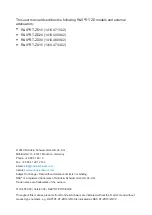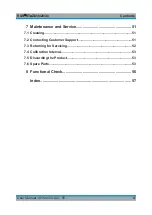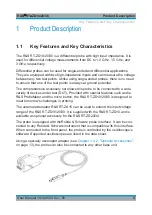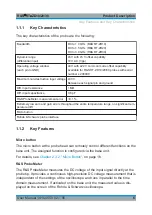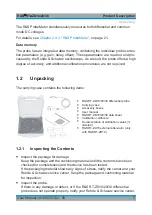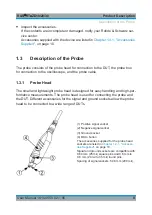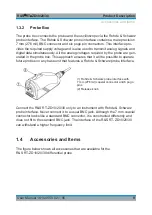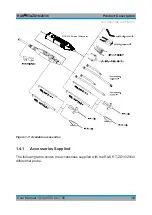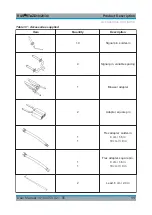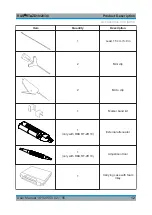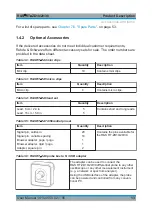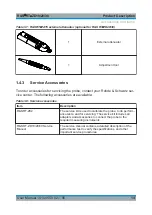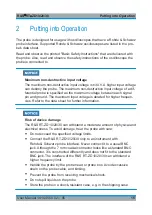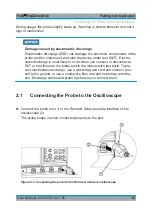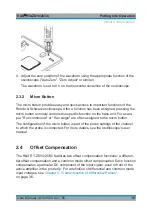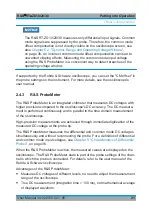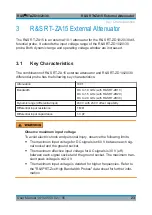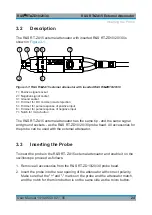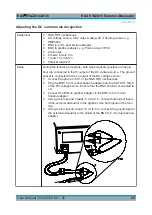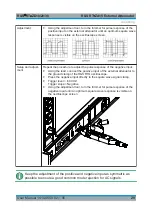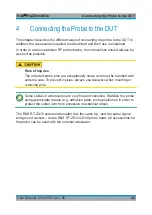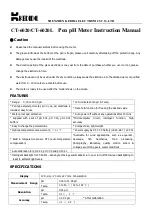
Putting into Operation
R&S
®
RT
‑
ZD10/20/30
15
User Manual 1410.4550.02 ─ 05
2
Putting into Operation
The probe is designed for usage with oscilloscopes that have a Rohde
&
Schwarz
probe interface. Supported Rohde
&
Schwarz oscilloscopes are listed in the pro-
be's data sheet.
Read and observe the printed "Basic Safety Instructions" that are delivered with
the probe. Also, read and observe the safety instructions of the oscilloscope the
probe is connected to.
Maximum non-destructive input voltage
The maximum non-destructive input voltage is ±30 V. A higher input voltage
can destroy the probe. The maximum non-destructive input voltage of a dif-
ferential probe is specified as the maximum voltage between each signal
pin and ground. The maximum input voltage is derated for higher frequen-
cies. Refer to the data sheet for further information.
Risk of device damage
The R&S
RT
‑
ZD10/20/30 can withstand a moderate amount of physical and
electrical stress. To avoid damage, treat the probe with care:
●
Do not exceed the specified voltage limits.
●
Connect the R&S
RT
‑
ZD10/20/30 only to an instrument with
Rohde
&
Schwarz probe interface. Never connect it to a usual BNC
jack. Although the 7
mm coaxial connector looks like a standard BNC
connector, it is constructed differently and does not fit to the standard
BNC jack. The interface of the R&S
RT
‑
ZD10/20/30 can withstand a
higher frequency limit.
●
Handle the probe by the probe head or probe box. Avoid excessive
strain on the probe cable, and kinking.
●
Prevent the probe from receiving mechanical shock.
●
Do not spill liquids on the probe.
●
Store the probe in a shock-resistant case, e.g. in the shipping case.


